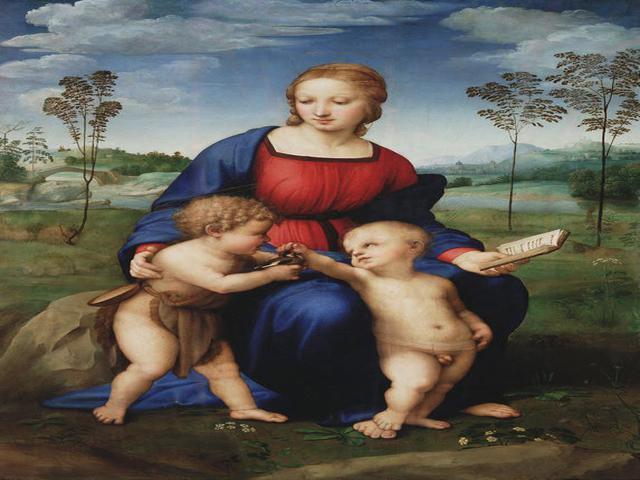Goldfinch Madonna

This work was painted during Raphael's Florentine period (1504-1508), during which he was able to study the great masters of Florence and also work for some of the most important merchant families. In his biography of the artist, Giorgio Vasari says that the painting was commissioned for the marriage of Lorenzo Nasi to Sandra di Matteo Canigiani, celebrated on February 23, 1506. When the Nasi house was destroyed by a landslide in 1547, the painting it broke. in seventeen fragments and probably given to Michele di Ridolfo del Ghirlandaio for restoration. Its subsequent history is unknown, until it is recorded as part of the collection of Cardinal Giovan Carlo de' Medici in 1646-47. During his Florentine period, Raphael painted other works on the theme of the group of the Virgin Mary with Jesus and the young John the Baptist, in which he was able to draw on all his experience of Urbino and Florence (see, for example, the "Madonna in the meadow" in the Kunsthistorisches Museum, Vienna, and the "Belle Jardinière" in the Musée du Louvre, Paris). The composition of the pyramid reflects the deep impression that Leonardo made on him of the lost caricature of the "Madonna and Child with Saint Anne", which has been displayed since the beginning of the century in the Church of the Santissima Annunziata, as well as the "Madonna of Witches." "From Michelangelo, sculpted before the summer of 1506. By studying the laws of proportion in nature and in the works of Perugino, Fra' Bartolomeo and Leonardo, Raphael was able to create images of ideal and harmonious beauty that were not only perfect in its simplicity but also vital and dynamic, due to the intense exchanges of glances and gestures that link the figures, as well as the elegant variety of expressions, it was made more natural by using Leonardo's 'sfumato' technique, which Raphael also used to dissolve the background in The Environment on the Horizon. This is a modern image, but still contains symbolic elements of traditional worship, such as the small sacred text in the Virgin's hand, a sign of her faith and a harbinger of sacrifice of Christ, which is also evoked by the fragile innocence of the goldfinch that the young Saint John is holding so that the Baby Jesus can caress it.
© Tourblink